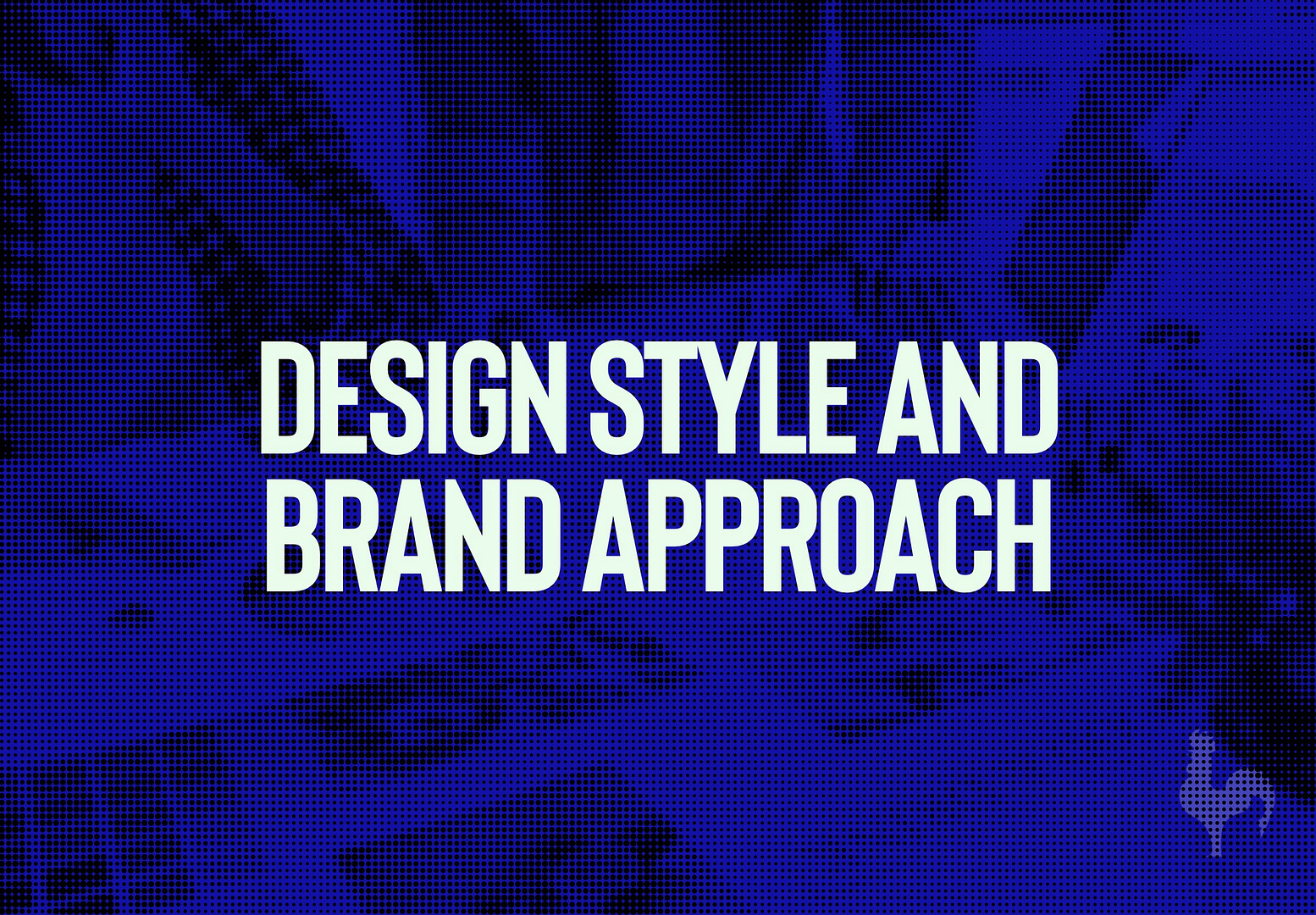In this post, we will look at the considerations to consider when selecting a design style, the numerous design methods accessible, and how to match them with the qualities of your business.
Creating a distinct and compelling brand presence is critical in today’s competitive industry. Design is a vital tool for communicating your brand’s message, capturing your target audience’s attention, and differentiating yourself from the competition. Careful attention is required when selecting the proper design style and strategy for your business to achieve a coherent depiction of your brand’s essence.
Understanding the Importance of Design for Your Brand
The Role of Design in brand perception
The visual expression of your brand, and design, has a significant impact on how your target audience sees and engages with it. A well-designed brand elicits emotions, communicates professionalism, and fosters trust.
Impact of Design on brand identity
Design is essential in developing a distinct brand identity that connects with your target audience. Consistency in design aspects across platforms aids in the development of recognition and familiarity.
Establishing brand consistency through design
Design consistency is essential for establishing a consistent brand image. You may strengthen your company’s identity and show brand loyalty by employing consistent design elements such as colours, font, and images.
Factors to Consider When Choosing a Design Style
Defining your brand’s personality and values
Before deciding on a design style, you must first grasp your brand’s personality and principles. Consider the feelings and connections you want your target audience to have with your brand.
Identifying your target audience
It is critical to understand your target audience‘s preferences, demographics, and psychographics. A design that is appealing to your target audience can assist to strengthen the connection and increase brand loyalty.
Analyzing industry trends and competitors
Observing current design trends and researching your rivals’ design techniques might bring useful information. It enables you to recognise popular design styles and separate yourself from the competition.
Exploring Different Design Styles and Approaches
Minimalist design
The minimalist design emphasises simplicity, clean lines, and plenty of white space. It exudes elegance, refinement, and modernism.
Vintage and retro design
Vintage and vintage design trends elicit feelings of nostalgia and charm. They frequently employ vintage imagery, antique font, and colours suggestive of a bygone period.
Modern and sleek design
Contemporary aesthetics with strong font, crisp lines, and minimalist components characterise modern and sleek designs. It offers a feeling of elegance and inventiveness.
Playful and colourful design
Vibrant colours, quirky drawings, and dynamic typography are used in playful and colourful designs. They evoke a sense of joy and vitality, making them ideal for companies aimed towards a younger demographic.
Elegant and elegant designs make use of refined aesthetics, delicate typography, and soft colour palettes. They exude opulence, exclusivity, and high-end appeal.
Matching Design Styles with Brand Characteristics
Aligning design with brand personality
Select a design style that complements your brand’s personality and ideals. A lively and colourful design, for example, may be appropriate for a children’s clothes company, whilst an exquisite and refined design may be appropriate for a luxury jewellery firm.
Choosing the appropriate colour palette
Colours elicit feelings and have symbolic significance. Choose a colour palette that corresponds to your brand’s message and the preferences of your target audience.
Selecting typography and font styles
The tone of your brand’s message is determined by typography. Select typefaces that fit your design style while assuring readability and communicating the required brand image.
Incorporating visuals and graphics
Visuals and visuals are extremely important in grabbing attention and delivering information. Choose images that strengthen your brand’s message and appeal to your target audience, whether they be pictures, drawings, or infographics.
The Importance of Consistency in Design
Creating a recognizable brand identity
Consistency in design features across several touchpoints, such as your website, social media accounts, and marketing materials, contributes to the creation of a recognisable brand identity. This consistency builds trust and improves brand memory.
Utilizing design elements consistently across platforms
Make sure your design style is consistent across platforms and mediums. Maintaining consistency, from your logo to your website design, helps to a seamless brand experience.
Maintaining brand integrity and loyalty
The consistent design fosters audience trust and familiarity, strengthening brand integrity and creating long-term brand loyalty. By providing a consistent brand experience, you establish a dependable and trustworthy image.
Seeking Professional Design Assistance
Hiring a graphic designer or design agency
Consider employing a professional graphic designer or design firm if you lack design knowledge. They can assist you in translating your brand vision into a visually attractive design that is in line with your goals.
Working with design experts gives you access to their creativity and industry knowledge. They may provide vital insights and help you choose the best design style for your company.
Implementing and Evaluating the Chosen Design Style
Applying the selected design across various touchpoints
Once you’ve decided on a design style, use it consistently across all of your brand’s touchpoints. To reflect the new look, update your website, social media accounts, marketing materials, and packaging.
Collecting feedback and making adjustments
Gather input from your target audience regularly and analyse how your selected design style is engaging with them. Make changes as needed to fine-tune and strengthen your brand’s visual identity.
Conclusion
Choosing the proper design style and strategy for your company is an important step towards developing a strong and memorable brand identity. You may make an informed selection by taking into account elements such as brand personality, target audience, industry trends, and competition analysis. Remember to prioritise design consistency, seek expert support when necessary, and constantly analyse and modify your chosen design style to ensure it corresponds with the progression of your brand.
FAQs
Can I mix different design styles for my brand?
While it’s possible to combine elements from different design styles, it’s important to maintain a cohesive and consistent brand identity. Mixing design styles should be done strategically to ensure they complement each other rather than create confusion.
How often should I update my brand’s design style?
There is no fixed timeframe for updating your design style. However, it’s recommended to periodically evaluate your brand’s visual identity and consider updates if it no longer aligns with your target audience or current industry trends.
Is it necessary to hire a professional graphic designer?
While it’s not mandatory, hiring a professional graphic designer can bring expertise, creativity, and a fresh perspective to your brand’s design. They can help you create a visually appealing and impactful design that resonates with your audience.
What if I’m on a limited budget for design?
If you have budget constraints, you can explore affordable design options such as online design platforms, freelance designers, or design templates. These options can still offer visually appealing designs at a lower cost.







